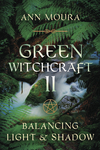Just starting out? Walk your own path

January is a month of new beginnings, so this month's column is meant to provide a few words of guidance for beginners new to witchcraft and eager to learn more this year.
There are different types of learners: some do best with a teacher, some are more motivated in a group setting, some learn by doing, and some turn to books. Think back to a learning experience that gave you satisfaction and good results. Was it your yoga instructor giving you personal instruction outside of class time? Was it a book club where you could discuss your ideas with an open, receptive group of like-minded souls? Was it tinkering around with your toaster until you figured out how it all works together? Or was it curled up with a book, deep in thought?
Whatever works best for you is the direction you should head first. Don't listen to other people's mandates about the "proper" way to study witchcraft. Yes, the ultimate witchy education would encompass all four types of learning, but let's face it—not everyone has access to it all!
If you are the first type of learner, try to find a teacher in your area. First check the local metaphysical bookstores—they may provide courses themselves or have a bulletin board listing local classes. It's always nice to get a recommendation from someone you trust. Or, check the Internet (WitchVox.com in particular).
If you're a group learner, use the same resources to locate a group to join. If you can't find one that's right for you, write your own ad. (Remember to be safe and use your common sense.) List what you'd like to do—read books together? Practice spellcasting? Discuss faith and deities? Will you meet weekly or monthly? The more specific you are, the more success you'll have in attracting others who can also benefit from these meetings.
If you are a hands-on learner, and you'd rather create your own spell than try someone else's, pick up Cunningham's Encyclopedia of Magical Herbs and Cunningham's Encyclopedia of Crystal, Gem & Metal Magic. These books give you all the correspondences you'll need, plus general instructions for how to power a spell. Take it from there by mixing and matching your ingredients, intentions, and modes of working—and record your results to find out what works and what doesn't.
Finally, if you're a book learner, there are many resources providing different benefits. Wicca: A Year and A Day by Timothy Roderick is for those who really want a taskmaster to keep them at it every single day! If you're looking for something more lighthearted and fun, try Silver RavenWolf's To Ride a Silver Broomstick.
Christopher Penczak's books give you the feeling of a one-on-one teacher plus plenty of exercises. Start with The Inner Temple of Witchcraft before reading the next three books in his Temple of Witchcraft series. If you feel more inclined toward natural witchcraft, try Ann Moura's Green Witchcraft series of five books.
See which book is the right match for you. As you can see, there are many directions to take—but the first step is to get started!
Related Products



is subject to certain Terms and Conditions